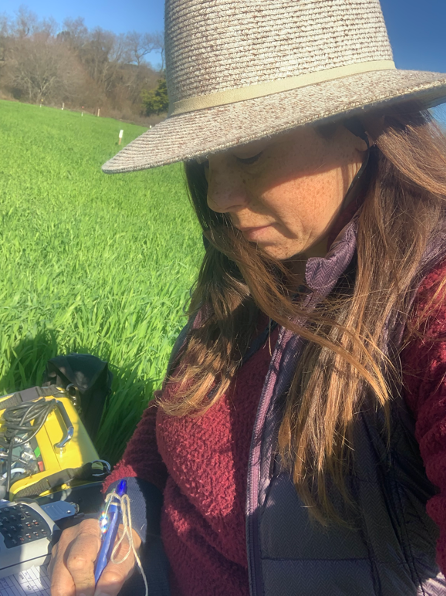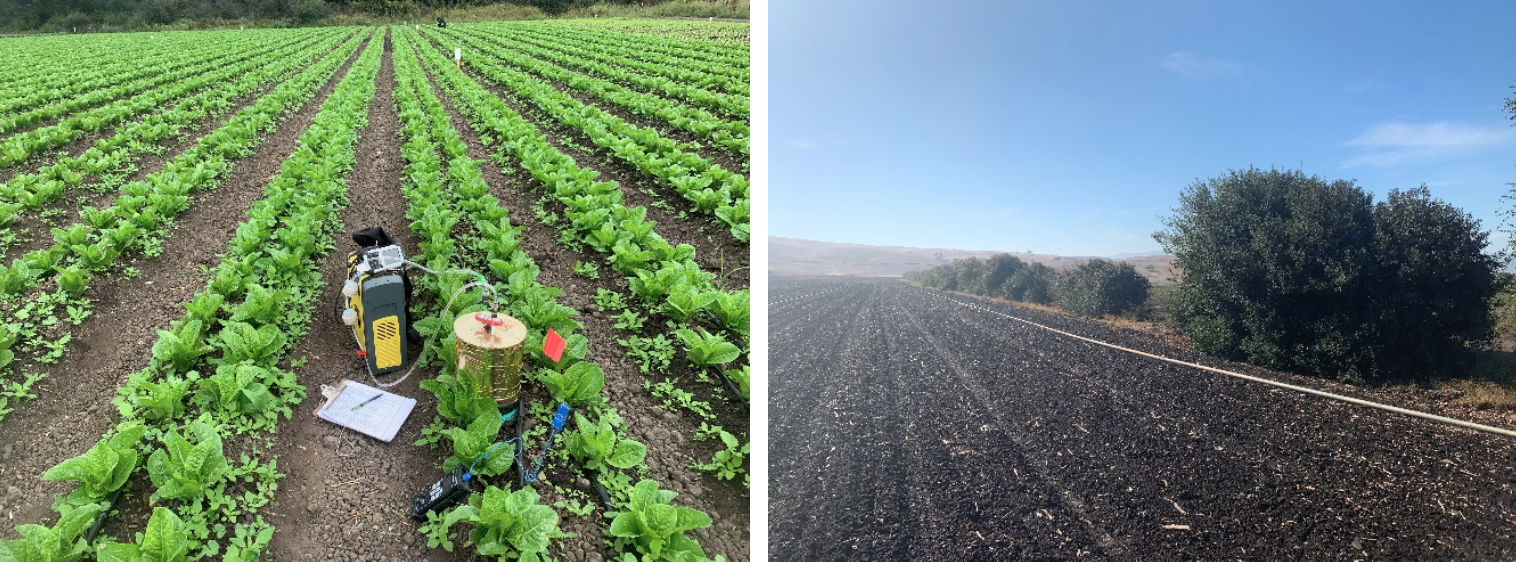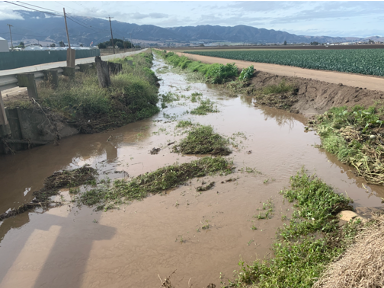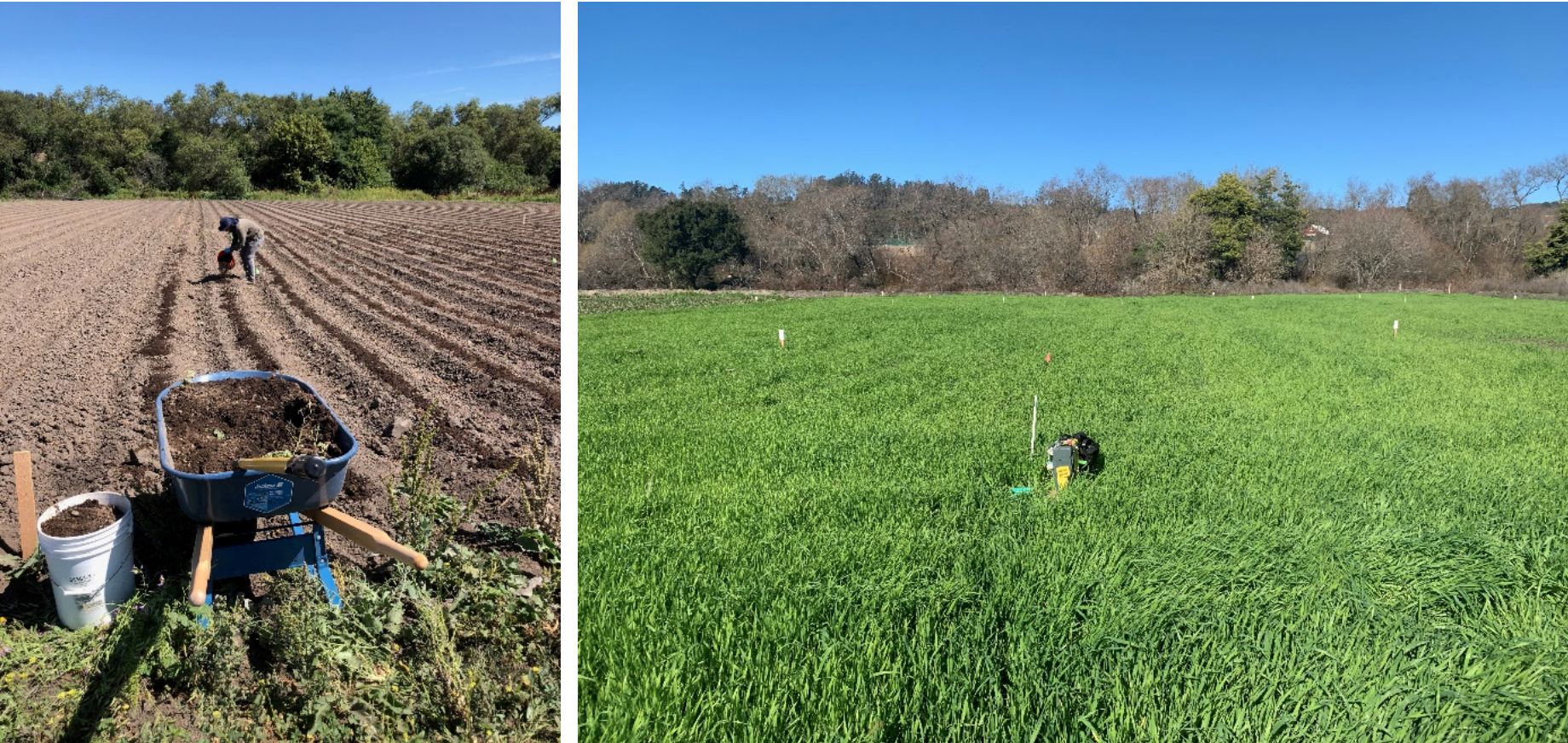by Stefanie Kortman, CSUMB Haffa Lab

My research in sustainable agriculture practices was born from two passions: my love of food and my concern for protecting and preserving natural resources. I came into my role as an agricultural scientist in the world-renowned farming valleys of the Monterey Bay region. (One of these valleys—the Salinas Valley—is even called “The Salad Bowl of the World” for all the produce it exports.) In my work, I examine how different farm management practices influence soil and the production of greenhouse gas emissions, such as carbon dioxide, methane, and nitrous oxide. Before I started my research, I never thought of soil as a source of greenhouse gas emissions and didn’t know how the process of growing food can cause more to go into our atmosphere than are naturally produced in the soil by microorganisms. I have come to learn that agriculture is in fact an important source of human-induced greenhouse gases. It’s estimated to contribute 19–29% of total greenhouse gas emissions, while transportation accounts for 14%. With agriculture soil management heralded as a top solution for drawing down global carbon dioxide levels to mitigate climate change, farmers are increasingly expected to adopt practices that reduce emissions and store, or sequester, carbon in soil while still providing our growing population with essential food products. The solution is in the soil. My goal is to help show farmers how to keep their soil healthy. It benefits both their farming and the environment.
Farm-to-Water, Farm-to-Air
What happens on farms does not always stay on farms. When farmers apply fertilizer and water to soil, plants don’t use all of it. Microscopic organisms (aka “microbes”) in the soil transform excess nutrients into other forms, such as gas emissions. One such gas is nitrous oxide, or “laughing gas”—the same gas dentists use for sedating patients. But nitrous oxide production from agriculture is no laughing matter; this potent greenhouse gas is 300 times more effective than carbon dioxide at trapping heat on Earth. Most nitrous oxide emissions caused by humans come from agriculture—mainly from applying more nitrogen fertilizer to the soil than plants can use.


Nutrients can also be transported in water (think salt in water) down through the soil and into groundwater or out of farms through drainage channels that carry this “runoff” into rivers, streams, estuaries, and eventually the ocean. This can lead to contamination of drinking water, pollution of waterways, and negative impacts within aquatic ecosystems. Runoff often encourages the growth of harmful algae that use up the dissolved oxygen in the water and create “dead zones”. Thankfully, there are many opportunities for improving farm management practices and reducing air and water pollution.
Good for the Soil, Good for the Farmer
Improving crop production, reducing losses of topsoil and nitrogen, and storing carbon in soil are all achievable opportunities of soil-health focused farming, and it all comes down to the basis of managing soil health: soil aggregates. Soil aggregates are little clumps of soil bound by secretions from roots and enzymes from microbes, both of which act like glue to hold soil particles together. They improve soil structure by creating little pockets of space between clumps, which helps keep water in place so plants can use it. This, in turn, reduces topsoil erosion and runoff. When soil can hold more water, less irrigation is needed, and minimizing erosion and runoff reduces the loss of nitrogen and precious topsoil from farms. These little clumps also keep carbon locked away, or sequestered, and help promote conditions that reduce nitrous oxide production.
Practices that improve soil aggregate stability, and thus soil health, include planting cover crops and reducing tillage. Cover crops are crops that are planted in the winter or spring and provide many benefits to soil, including adding plant-usable nitrogen, keeping soil in place, extending roots into the soil to create pathways for water to move through, and much more. Common cover crops are legumes—such as hairy vetch, fava beans, and clover—and grasses—such as rye, oats and buckwheat. Reducing disturbance to the soil by minimizing tillage helps maintain soil aggregates that take time to build. These methods can help farmers promote healthy soil and reduce greenhouse gas emissions.

The future of food production is dependent on soil health-based farm management, but not all methods work for every farm or region. Researchers like me partner with farmers to monitor the impacts different crop and soil management practices have on soil health and crop production and learn which techniques work best for different situations. Through these collaborative efforts we can assess the efficacy and practicality of different management practices in terms of improving soil health and maintaining a successful farm business. The future of farming depends on partnerships to achieve the greatest benefit for feeding a growing population and protecting the resources that make this planet so unique. I am proud to be working for a better future.

